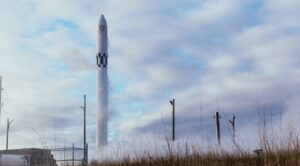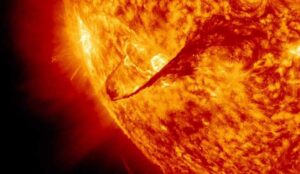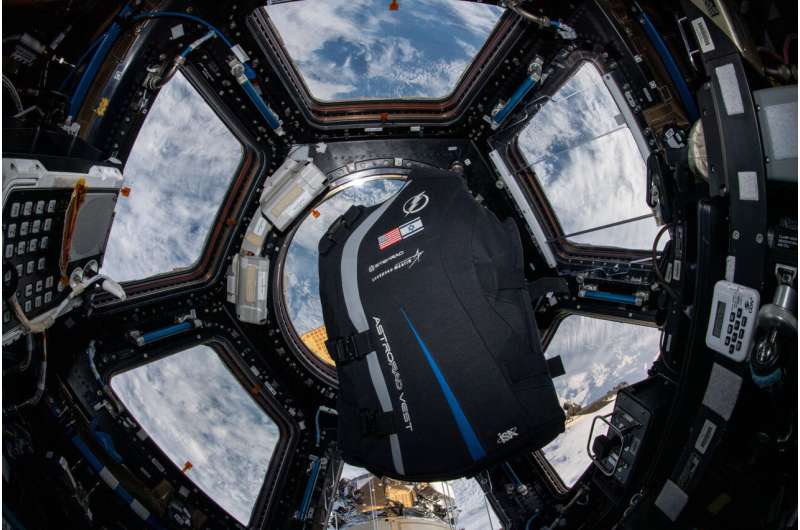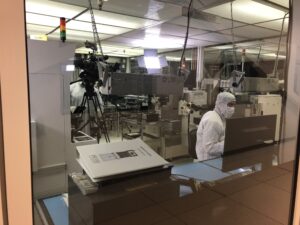SpaceX Dragon capsule to return to Earth on Wednesday
Wednesday, 11 January 2023 06:12 The SpaceX Drago cargo spacecraft is expected to splash down on Wednesday off the Florida coast after successfully leaving the International Space Station on Monday.
The capsule arrived about a month ago to deliver about two tons of scientific investigations and supplies to the space station.
NASA astronauts Frank Rubio and Josh Cassada completed two spacewalks in December to ins
The SpaceX Drago cargo spacecraft is expected to splash down on Wednesday off the Florida coast after successfully leaving the International Space Station on Monday.
The capsule arrived about a month ago to deliver about two tons of scientific investigations and supplies to the space station.
NASA astronauts Frank Rubio and Josh Cassada completed two spacewalks in December to ins Researchers develop AI method for mapping planets
Wednesday, 11 January 2023 06:12 Creating geological maps of planetary surfaces such as Mars is a complex process. From data collection to data analysis to publication in different formats - the production of maps is based on a time-consuming, multi-step process.
Deep Learning techniques, which use artificial neural networks to analyze data sets, can significantly improve the production process, as broadly shown in both s
Creating geological maps of planetary surfaces such as Mars is a complex process. From data collection to data analysis to publication in different formats - the production of maps is based on a time-consuming, multi-step process.
Deep Learning techniques, which use artificial neural networks to analyze data sets, can significantly improve the production process, as broadly shown in both s Vast Space becomes the newest member of "Space Beach"
Wednesday, 11 January 2023 06:12 Vast, a pioneer in space habitation technologies, has announced the relocation and major expansion of its corporate headquarters to a newly built facility in Long Beach, California, for the established pipeline of premier aerospace talent, proximity to the port and airport and continued efforts to expand commercial space capabilities in the region.
The new structures, which will house the
Vast, a pioneer in space habitation technologies, has announced the relocation and major expansion of its corporate headquarters to a newly built facility in Long Beach, California, for the established pipeline of premier aerospace talent, proximity to the port and airport and continued efforts to expand commercial space capabilities in the region.
The new structures, which will house the Spaceflight Inc. and Maritime Launch agree to future Sherpa OTV missions
Wednesday, 11 January 2023 06:12 Spaceflight Inc., a premier launch and in-space transportation services provider, has signed an agreement with Maritime Launch Services Inc. (NEO: MAXQ, OTCQB: MAXQF) to launch up to five of its Sherpa Orbital Transfer Vehicles (OTVs). The launches will be from Spaceport Nova Scotia aboard the Cyclone-4M beginning in 2025.
Spaceflight has successfully delivered more than 550 spacecraft acr
Spaceflight Inc., a premier launch and in-space transportation services provider, has signed an agreement with Maritime Launch Services Inc. (NEO: MAXQ, OTCQB: MAXQF) to launch up to five of its Sherpa Orbital Transfer Vehicles (OTVs). The launches will be from Spaceport Nova Scotia aboard the Cyclone-4M beginning in 2025.
Spaceflight has successfully delivered more than 550 spacecraft acr Lynk launches world's 2nd and 3rd commercial Cell-Towers-in-Space
Wednesday, 11 January 2023 06:12 Lynk Global, Inc. (Lynk), the world's leading satellite-direct-to-standard-phone telecoms company, has reported the successful launch and deployment of two more satellites in the company's commercial cell-towers-in-space constellation. These satellites are covered by the world's first and only commercial satellite-direct-to-standard-phone license that Lynk received from the FCC in September 2022
Lynk Global, Inc. (Lynk), the world's leading satellite-direct-to-standard-phone telecoms company, has reported the successful launch and deployment of two more satellites in the company's commercial cell-towers-in-space constellation. These satellites are covered by the world's first and only commercial satellite-direct-to-standard-phone license that Lynk received from the FCC in September 2022 Ovzon selects Dispersive to enhance satellite communications security
Wednesday, 11 January 2023 06:12 Dispersive Holdings Inc. (Dispersive), a rapidly emerging leader in the stealth networking and Zero Trust Network Access (ZTNA) arena, and Ovzon, a world-leading provider of SATCOM-as-a-Service and mobile satellite communications solutions, have reached an agreement in which Ovzon will utilize Dispersive to provide enhanced, secure satellite communications as part of their total solution.
Dispersive Holdings Inc. (Dispersive), a rapidly emerging leader in the stealth networking and Zero Trust Network Access (ZTNA) arena, and Ovzon, a world-leading provider of SATCOM-as-a-Service and mobile satellite communications solutions, have reached an agreement in which Ovzon will utilize Dispersive to provide enhanced, secure satellite communications as part of their total solution. The enduring stellar lifecycle in 30 Doradus
Wednesday, 11 January 2023 06:12 The largest and brightest region of star formation in the Local Group of galaxies, including the Milky Way, is called 30 Doradus (or, informally, the Tarantula Nebula). Located in the Large Magellanic Cloud, a small neighbor galaxy to the Milky Way, 30 Doradus has long been studied by astronomers who want to better understand how stars like the Sun are born and evolve.
NASA's Chandra X-ray
The largest and brightest region of star formation in the Local Group of galaxies, including the Milky Way, is called 30 Doradus (or, informally, the Tarantula Nebula). Located in the Large Magellanic Cloud, a small neighbor galaxy to the Milky Way, 30 Doradus has long been studied by astronomers who want to better understand how stars like the Sun are born and evolve.
NASA's Chandra X-ray NASA missions find 'jetlets' could power the solar wind
Wednesday, 11 January 2023 06:12 Scientists with NASA's Parker Solar Probe mission have uncovered significant new clues about the origins of the solar wind - a continual stream of charged particles released from the Sun that fills the solar system.
Observations from multiple space and ground-based observatories show the solar wind could be largely fueled by small-scale jets, or "jetlets," at the base of the corona - the S
Scientists with NASA's Parker Solar Probe mission have uncovered significant new clues about the origins of the solar wind - a continual stream of charged particles released from the Sun that fills the solar system.
Observations from multiple space and ground-based observatories show the solar wind could be largely fueled by small-scale jets, or "jetlets," at the base of the corona - the S NASA scientists study life origins by simulating a cosmic evolution
Wednesday, 11 January 2023 06:12 Amino acids make up millions of proteins that drive the chemical gears of life, including essential bodily functions in animals. Because of amino acids' relationship to living things scientists are eager to understand the origins of these molecules. After all, amino acids may have helped spawn life on Earth after being delivered here about 4 billion years ago by pieces of asteroids or comets.
Amino acids make up millions of proteins that drive the chemical gears of life, including essential bodily functions in animals. Because of amino acids' relationship to living things scientists are eager to understand the origins of these molecules. After all, amino acids may have helped spawn life on Earth after being delivered here about 4 billion years ago by pieces of asteroids or comets. SwRI scientists find evidence for magnetic reconnection between Ganymede and Jupiter
Wednesday, 11 January 2023 06:12 In June 2021, NASA's Juno spacecraft flew close to Ganymede, Jupiter's largest moon, observing evidence of magnetic reconnection. A team led by Southwest Research Institute used Juno data to examine the electron and ion particles and magnetic fields as the magnetic field lines of Jupiter and Ganymede merged, snapped and reoriented, heating and accelerating the charged particles in the region.
In June 2021, NASA's Juno spacecraft flew close to Ganymede, Jupiter's largest moon, observing evidence of magnetic reconnection. A team led by Southwest Research Institute used Juno data to examine the electron and ion particles and magnetic fields as the magnetic field lines of Jupiter and Ganymede merged, snapped and reoriented, heating and accelerating the charged particles in the region. NASA wants you to help study planets around other stars
Wednesday, 11 January 2023 06:12 More than 5,000 planets have been confirmed to exist outside our solar system, featuring a wide array of characteristics like clouds made of glass and twin suns. Scientists estimate there could be millions more exoplanets in our home galaxy alone, which means professional astronomers could use your help tracking and studying them.
This is where Exoplanet Watch comes in. Participants in the
More than 5,000 planets have been confirmed to exist outside our solar system, featuring a wide array of characteristics like clouds made of glass and twin suns. Scientists estimate there could be millions more exoplanets in our home galaxy alone, which means professional astronomers could use your help tracking and studying them.
This is where Exoplanet Watch comes in. Participants in the First ABL Space Systems launch fails
Tuesday, 10 January 2023 23:34
The first flight of ABL Space Systems’ RS1 rocket failed to reach orbit Jan. 10, the second loss of a commercial small launch vehicle in 24 hours.
The post First ABL Space Systems launch fails appeared first on SpaceNews.
NOAA might revise geostationary weather satellite timeline
Tuesday, 10 January 2023 21:18
High demand for space weather data is prompting the National Oceanic and Atmospheric Administration to consider revising the schedule for its geostationary weather satellite fleet.
The post NOAA might revise geostationary weather satellite timeline appeared first on SpaceNews.
Scientific samples, hardware return from International Space Station for more study
Tuesday, 10 January 2023 21:16
A radiation protection vest, olive oil, and sutured tissues are among the scientific samples returning from the International Space Station on the 26th SpaceX commercial resupply services mission for NASA. The Dragon spacecraft, which arrived at the station Nov. 27, is scheduled to undock on January 9, with splashdown January 11 off the coast of Florida.
The cargo returns to NASA's Kennedy Space Center in Florida, where scientists can make additional observations and analyses of their experiments before the effects of gravity fully kick back in. Many also conduct more in-depth analysis later in their home labs.
CAES Space Systems becomes Frontgrade Technologies
Tuesday, 10 January 2023 20:17
CAES Space Systems, a supplier of radiation-hardened electronics, rebranded as Frontgrade Technologies Jan. 10 after being sold to private equity firm Veritas Capital.
The post CAES Space Systems becomes Frontgrade Technologies appeared first on SpaceNews.

